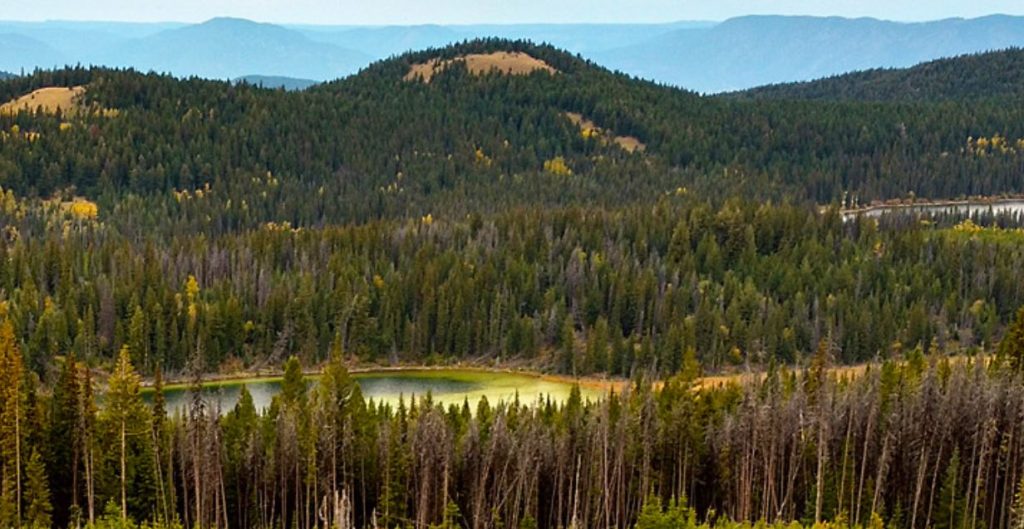Tower Resources discovers new gold source at More Creek, British Columbia

Tower Resources Ltd. [TSXV-TWR] reported that its September gold grain sampling up Arrow Creek on its More Creek property in British Columbia’s prolific Golden Triangle has pinned down the source of a historical gold anomaly straddling the Red Line rift structure with which the world-class epithermal gold and porphyry Cu-Au deposits of the Triangle are closely associated.
Historically, exploration in the area of Tower’s 6430 hectare More Creek property has focused on the Sinter Zone, a siliceous epithermal alteration zone that is strongly anomalous in Hg (mercury) but not in gold. However, Tower’s main interest in acquiring the property in 2016 was a high, 1.6 g g/t gold assay reported in 1990 from a single gravel sample collected at the mouth of Arrow Creek on the northern edge of the property. The anomaly was obtained from a pan concentrate, suggesting that the gravel contained physical gold grains.
Arrow Creek is fed by a receding valley glacier on the high southern part of the property and flows northward across the property for 3 km to its junction with More Creek where the anomalous sample was collected. The valley of Arrow Creek traces the Triassic Pass Fault, part of the critical Red Line rift zone between Late Triassic and Early Jurassic volcanic rocks to which most of the epithermal gold and porphyry Cu-Au mines of the Golden Triangle are closely related, including the world-class Eskay Creek, Brucejack and Red Chris deposits.
After staking the More Creek property in 2016, Tower collected three 20-kg gravel samples to investigate the historical Au anomaly. These strategically placed samples confirmed that gold grains are abundant in Arrow Creek for more than 2 km upstream and that none of this gold came from the Sinter Zone.
Joe Dhami, President and CEO, commented: “We have now traced the gold grains to their source area right on the Red Line, transforming More Creek into a target-ready opportunity that could attract a well-funded partner while we continue to focus on Rabbit North.”
In the present gold grain survey, the upper 1 km of Arrow Creek was sampled with the exception of a 300-500-metre stretch beginning at the toe of the glacier which is covered by a landslide from the steep eastern slope of the valley. Twelve gravel samples weighing ~15 kg were collected – nine from Arrow Creek and three from the mouths of tributary creeks. Sample 8, immediately downstream from the landslide, was a duplicate of Sample 7.
All of the gravel samples from Arrow Creek downstream of the landslide contained anomalous concentrations of gold grains whereas those collected both upstream of the landslide and from the tributary creeks contained few if any gold grains, clearly showing that the gold grains and landslide have a common source area.
Stu Averill, P.Geo., a Tower director, commented further: “Our gold grain sampling upstream on Arrow Creek quickly revealed and appears to have cornered a significant new gold target on our More Creek property following the same playbook that brought us three gold and copper-gold discoveries in rapid succession on our flagship Rabbit North property. It’s a very exciting time for our Company.”
Arrow Creek has a very steep gradient, dropping 800 metres over its 3-km course. As a result, its flow rate and hydraulic energy are extreme and most of the creek bed is bouldery; only small pools of gravel are available for sampling. Due to the creek’s high flow rate only the largest, sand-sized gold grains that typically comprise about 5% of the transported grains in a stream are settling in the gravel traps; the other 95%, being silt-sized, are carried far downstream. Therefore, the gold grain anomaly in the creek is actually much stronger than indicated by the limited number of trapped grains.
Tower acquired the 6,430-hectare More Creek property by staking in 2016 and holds a 100% interest in the property subject to a 2% net smelter royalty with a 1% buyback provision. The centre of the property is 15 km from Highway 37, the Bob Quinn airstrip and the high voltage transmission line that powers the mines of the Golden Triangle and.
The company’s key exploration assets, all in B.C., are the Rabbit North copper-gold porphyry project located between the New Afton copper-gold and Highland Valley copper mines in the Kamloops mining district, the Nechako porphyry-associated gold-silver project near Artemis’ Blackwater project and the More Creek epithermal gold project on the critical “red line” structural zone connecting the mineral deposits of the Golden Triangle.
